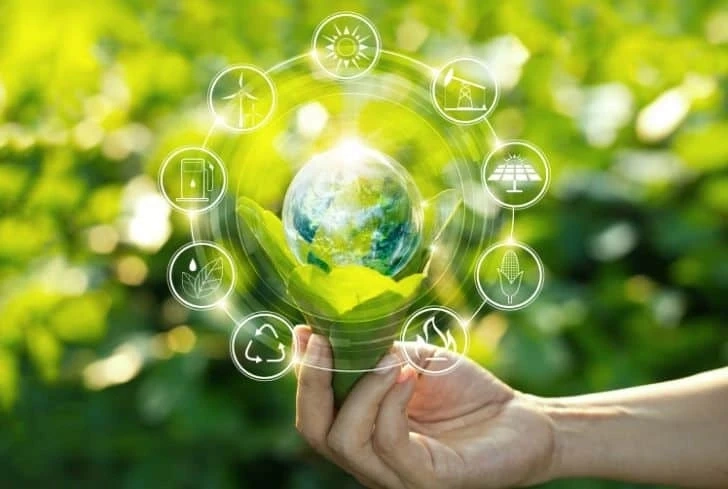When a company buys carbon offsets, it invests in a carbon reduction project. This is a way for them to reduce their pollution footprint and balance the scales. However, it is important to note that carbon offsets are not required to make a profit.
Carbon Offsets are a way of balancing the scales on pollution
Carbon offsets are a way of ensuring that your company's carbon footprint doesn't have a negative impact on the environment. However, these programs can be problematic. The most common problem is that many offset projects do not deliver on the emissions reductions they promise. In addition, different offset programs have different standards and best practices that are difficult to enforce. One such program is the United Nations' REDD+ program, which aims to reduce emissions related to deforestation and restore natural areas.
In the early stages of the offset program, experts used data from the US Forest Service to calculate regional averages of carbon. They used data from tens of thousands of forest plots nationwide and combined them into larger regional areas. This helped to establish a common baseline and calculated how much carbon a typical privately owned forest would store.
They are a financial investment in a carbon reduction project
Carbon offsets are a financial investment in an environmentally friendly project that reduces carbon dioxide emissions. They are a great way to fight climate change, as offsets help to protect the environment and route money to poorer parts of the world. Carbon offsets have a long and rich history, and they've been used to solve a variety of other environmental issues.
Carbon offsets are a way for developed countries to make a contribution to global carbon reduction efforts in developing countries. They work by making payments to other companies that are undertaking carbon reduction projects in emerging countries. The mechanism was designed to allow for flexibility and to prioritize low-cost carbon abatement projects. When a company purchases carbon offsets, they are paying someone else to remove CO2e from the atmosphere. These avoided or neutralized emissions count towards the buyer's or developer's carbon balance.
They are a greenwash
While carbon offsets are a good way to channel funds to sustainable development and conservation projects, many experts believe that they are ineffective and do more harm than good. Large companies are using offsets to try to balance their carbon emissions with projects that reduce emissions, such as forest conservation. However, this strategy does not do anything to reduce the overall carbon footprint of an industry. Instead, it allows companies to continue exploiting hydrocarbons and polluting the atmosphere.
Carbon offsets are a distraction from real climate action. These schemes are often ineffective and can result in land-grabbing, deforestation, and human rights violations. At the COP26 climate conference in November, it is important to ensure that the carbon markets do not derail the talks. Instead, governments must focus on establishing firm rules for companies to reduce their emissions directly from their activities.
They are voluntary
Carbon offsets are a way to offset greenhouse gas emissions. Using carbon offsets allows companies to compensate for their emissions and make a positive impact on the environment. These offsets are measured in metric tons of carbon dioxide. In theory, one carbon offset equals the removal of one metric tonne of CO2 from the atmosphere. These offsets are divided into two types: compliance offsets and voluntary offsets. The first type of offsets is made to comply with the requirements of law. The second type of offset is voluntary, and aims to meet a corporate social responsibility goal.
The carbon offset market is booming. It's a global industry that allows companies to purchase offsets to offset their emissions and help the environment at the same time. These credits are traded on the carbon market. This allows companies to offset their emissions without incurring a high fee.
They require clear ownership
In order to be effective, carbon offsets must have clear ownership. The offset market works in a similar manner to the commodities market, where investors and financial professionals buy and sell offsets. Typically, they do so to make a short-term financial gain. But there are several ways to ensure that offsets are owned by the right people.
First, offsets must be made by companies that own land. This makes it more transparent for investors and will ensure that the credits are worth what they claim. Carbon offsets are created by reducing carbon emissions from a source. Most offset projects support renewable energy such as wind farms, biomass energy, biogas digesters, and hydroelectric dams. Other types of projects include energy efficiency projects, such as energy-efficient cookstoves. In addition, carbon offsets are used for projects that prevent greenhouse gases from entering the atmosphere. These include carbon removal offsets, which include net-negative products, carbonated building elements, and geologically stored carbon.
They are expensive
Carbon offsets are a method to reduce carbon dioxide emissions and carbon footprints. The price of an offset can range from $1 to $50 per ton. The price depends on the type of offset project, the carbon standard under which it was developed, its location, and the co-benefits it carries. In addition, the price of an offset is subject to market forces. Buying in bulk can allow campuses to secure a lower price per ton. In addition, offset prices can also rise as more nations adopt climate reduction targets.
Carbon offset prices are rising fast, with the price of carbon credits doubling every 18 months. But the current cost of offsets is low when compared to the actual cost of reducing emissions. The price of carbon offsets has become more of a marketing gimmick than a social good. And while carbon offsets may be an effective tool in promoting conservation, they are essentially unsustainable as a long-term solution. To address the problem, governments and companies can take a variety of actions to curb their emissions, including carbon capture and storage and bioenergy with CCS. However, these measures are not cost-effective enough to cover the full gap between current emissions and the pledged levels in the Paris Agreement.
0


